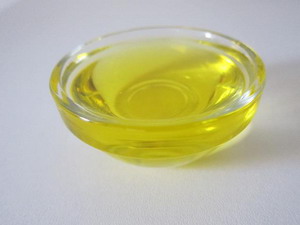 Linoleic acid may sound like some weird chemical you might think you have never consumed. But the truth is the average American has 15 to 20% of the calories in their diet coming from linoleic acid. Compare that to 150 years ago when the average consumption was 1 – 3%. Linoleic acid is the polyunsaturated fatty acid (omega 6 PUFA) that makes up the majority of vegetable and seed oils. Where might you encounter high amounts of this? How about mayonnaise, salad dressings, margarine, potato/tortilla/whatever chips, any fried food, most packaged foods, vegan cheeses, tofu, baked goods/desserts, doughnuts, nuts, seeds, corn, hemp, and of course all your cooking oils. Animal, fish, and shellfish that are farm raised are generally fed grains that are high in linoleic acid, so their flesh will also have high amounts of linoleic acid in it. Most pork and chicken fall into this category. So, as you can see Americans consume a lot of linoleic acid in their diets.
Linoleic acid may sound like some weird chemical you might think you have never consumed. But the truth is the average American has 15 to 20% of the calories in their diet coming from linoleic acid. Compare that to 150 years ago when the average consumption was 1 – 3%. Linoleic acid is the polyunsaturated fatty acid (omega 6 PUFA) that makes up the majority of vegetable and seed oils. Where might you encounter high amounts of this? How about mayonnaise, salad dressings, margarine, potato/tortilla/whatever chips, any fried food, most packaged foods, vegan cheeses, tofu, baked goods/desserts, doughnuts, nuts, seeds, corn, hemp, and of course all your cooking oils. Animal, fish, and shellfish that are farm raised are generally fed grains that are high in linoleic acid, so their flesh will also have high amounts of linoleic acid in it. Most pork and chicken fall into this category. So, as you can see Americans consume a lot of linoleic acid in their diets.
 Okay, so what? Many times in these newsletters I have mentioned how everything in nutritional health exists on a U curve – the Goldilocks curve. Too little of something and you lose health; too much of the same thing and you lose health. Linoleic acid is especially sensitive to this curve. It is actually essential to the body in small amounts – so essential you will die without it. But on the other hand, too much of it creates the basic cause of most chronic diseases including cancer. Thinking of that comparison to 150 years ago, imagine the average person drank 8 glasses of water or other beverage a day back then. If our average consumption of water increased the same percentage amount as our percentage increase of linoleic acid then we would be consuming 80 glasses of water a day now. In case you do not know, drinking that much water will kill you. Well, the same thing is happening with linoleic acid – it is killing us.
Okay, so what? Many times in these newsletters I have mentioned how everything in nutritional health exists on a U curve – the Goldilocks curve. Too little of something and you lose health; too much of the same thing and you lose health. Linoleic acid is especially sensitive to this curve. It is actually essential to the body in small amounts – so essential you will die without it. But on the other hand, too much of it creates the basic cause of most chronic diseases including cancer. Thinking of that comparison to 150 years ago, imagine the average person drank 8 glasses of water or other beverage a day back then. If our average consumption of water increased the same percentage amount as our percentage increase of linoleic acid then we would be consuming 80 glasses of water a day now. In case you do not know, drinking that much water will kill you. Well, the same thing is happening with linoleic acid – it is killing us.
 There have been many authors who have demonstrated how the rise of chronic disease has paralleled the increase in sugar consumption almost perfectly. Yes, sugar is bad, but linoleic acid is way worse. Those same charts showing the rise in chronic disease also parallel the rise in our use of this food product. Something like diabetes has an obvious cause-effect relationship to eating sugar, but the biochemistry and physiology of how linoleic acid affects us go much deeper and the pathways are much clearer. Unfortunately, hardly anyone is making any noise about this problem. I am not sure why. Perhaps because this involves complex intra-cellular biochemistry while sugar is a simple hormonal response. I will try to make some simple explanations to illustrate what is going on.
There have been many authors who have demonstrated how the rise of chronic disease has paralleled the increase in sugar consumption almost perfectly. Yes, sugar is bad, but linoleic acid is way worse. Those same charts showing the rise in chronic disease also parallel the rise in our use of this food product. Something like diabetes has an obvious cause-effect relationship to eating sugar, but the biochemistry and physiology of how linoleic acid affects us go much deeper and the pathways are much clearer. Unfortunately, hardly anyone is making any noise about this problem. I am not sure why. Perhaps because this involves complex intra-cellular biochemistry while sugar is a simple hormonal response. I will try to make some simple explanations to illustrate what is going on.
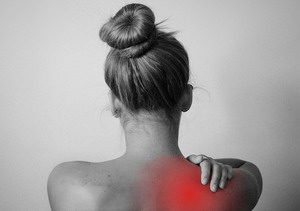 The first thing to understand about polyunsaturated oils is how easily they go rancid, also known as becoming oxidized. The byproducts of the oxidation of linoleic acid are highly damaging to the body. One example is how susceptible you are to sunburns and ultimately skin cancer. UV light causes oxidation of linoleic acid and the resulting metabolites help cause the damage from sunburn. Eliminating linoleic acid from your diet dramatically reduces your risk of sunburn. There are so many ways in which excess linoleic acid causes disease. Let’s list a few of these.
The first thing to understand about polyunsaturated oils is how easily they go rancid, also known as becoming oxidized. The byproducts of the oxidation of linoleic acid are highly damaging to the body. One example is how susceptible you are to sunburns and ultimately skin cancer. UV light causes oxidation of linoleic acid and the resulting metabolites help cause the damage from sunburn. Eliminating linoleic acid from your diet dramatically reduces your risk of sunburn. There are so many ways in which excess linoleic acid causes disease. Let’s list a few of these.
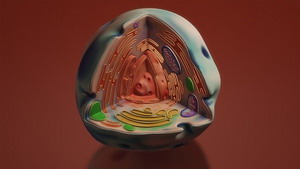 The most fundamental aspect of being alive is the ability to create energy from food. If you can’t do this, you get sick and die. What creates energy for us are tiny energy factories in our cells called mitochondria. The inner lining of the mitochondria is made of something called cardiolipin which contains four fat molecules. Which fat molecules are included depends on what tissue the mitochondria are in. When we eat too much LA (linoleic acid), it bumps out the right fats and replaces them. Because of the nature of what happens inside mitochondria, the LA oxidizes and kills the mitochondria. No mitochondria – no energy. On the flip side, a high intake of oleic acid like in olive, avocado, and high oleic forms of sunflower or safflower oil can reverse this problem if you eliminate the LA.
The most fundamental aspect of being alive is the ability to create energy from food. If you can’t do this, you get sick and die. What creates energy for us are tiny energy factories in our cells called mitochondria. The inner lining of the mitochondria is made of something called cardiolipin which contains four fat molecules. Which fat molecules are included depends on what tissue the mitochondria are in. When we eat too much LA (linoleic acid), it bumps out the right fats and replaces them. Because of the nature of what happens inside mitochondria, the LA oxidizes and kills the mitochondria. No mitochondria – no energy. On the flip side, a high intake of oleic acid like in olive, avocado, and high oleic forms of sunflower or safflower oil can reverse this problem if you eliminate the LA.
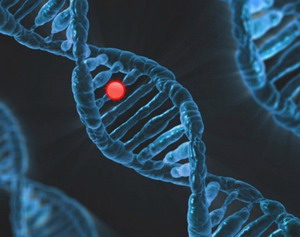 Cancer cells are basically cells with damaged mitochondria. Animals typically develop cancer once the LA in their diet reaches 4% to 10% of their energy intake, depending on the type of cancer. One study back in 1987 found that 100 patients with melanoma had significantly higher levels of LA in their blood compared to 100 normal patients. One of the breakdown products of oxidized LA is some stuff called 4HNE, a toxin that attacks our DNA – in particular one of the genes that is specifically for preventing cancer. This stuff also attacks the energy-producing pathways in the mitochondria causing the cell to switch to fermentation for energy, the classic indicator of a cancer cell. This same process is what is behind Alzheimer’s causing the starving of the brain’s memory cells.
Cancer cells are basically cells with damaged mitochondria. Animals typically develop cancer once the LA in their diet reaches 4% to 10% of their energy intake, depending on the type of cancer. One study back in 1987 found that 100 patients with melanoma had significantly higher levels of LA in their blood compared to 100 normal patients. One of the breakdown products of oxidized LA is some stuff called 4HNE, a toxin that attacks our DNA – in particular one of the genes that is specifically for preventing cancer. This stuff also attacks the energy-producing pathways in the mitochondria causing the cell to switch to fermentation for energy, the classic indicator of a cancer cell. This same process is what is behind Alzheimer’s causing the starving of the brain’s memory cells.
 4HNE also increases heart failure. Heart disease and hardening of the arteries begin with some minor damage to the wall of the heart or blood vessel. White blood cells called macrophages migrate to the area to eliminate any offending stuff in the area while healing takes place. But if you have high levels of LA (linoleic acid) in your blood, it triggers the LDL cholesterol in your blood to oxidize and stuff itself into the macrophages turning them into foam cells. The plaque in your blood vessels is really just macrophages stuffed full of oxidized LDL cholesterol. If your LA levels are low, this does not happen.
4HNE also increases heart failure. Heart disease and hardening of the arteries begin with some minor damage to the wall of the heart or blood vessel. White blood cells called macrophages migrate to the area to eliminate any offending stuff in the area while healing takes place. But if you have high levels of LA (linoleic acid) in your blood, it triggers the LDL cholesterol in your blood to oxidize and stuff itself into the macrophages turning them into foam cells. The plaque in your blood vessels is really just macrophages stuffed full of oxidized LDL cholesterol. If your LA levels are low, this does not happen.
 An area of concern for the last couple of years is Acute Respiratory Distress Syndrome (ARDS), and it is directly affected by our levels of LA. Our white blood cells convert LA into a potent toxin called leukotoxin to kill pathogens. Well, leukotoxin is also the basic cause of ARDS. This is what ends up killing the patients. Leukotoxin is what is created by the cytokine storm whipped up by the virus. Take down the LA and your white blood cells can’t convert enough of it to create ARDS. That sounds like timely advice.
An area of concern for the last couple of years is Acute Respiratory Distress Syndrome (ARDS), and it is directly affected by our levels of LA. Our white blood cells convert LA into a potent toxin called leukotoxin to kill pathogens. Well, leukotoxin is also the basic cause of ARDS. This is what ends up killing the patients. Leukotoxin is what is created by the cytokine storm whipped up by the virus. Take down the LA and your white blood cells can’t convert enough of it to create ARDS. That sounds like timely advice.
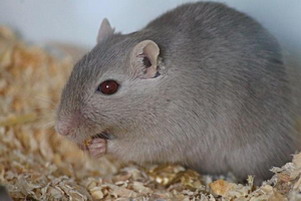 Lastly, let’s consider everyone’s favorite – obesity. A high LA diet causes obesity. Interestingly, when you feed mice a high saturated fat diet they don’t get fat until you also increase their LA consumption from 1% to 8%. There also appears to be a mechanism with seed oils/LA that gives us the munchies. Eating LA makes us crave carbohydrates.
Lastly, let’s consider everyone’s favorite – obesity. A high LA diet causes obesity. Interestingly, when you feed mice a high saturated fat diet they don’t get fat until you also increase their LA consumption from 1% to 8%. There also appears to be a mechanism with seed oils/LA that gives us the munchies. Eating LA makes us crave carbohydrates.
 As this brief review makes clear, excess linoleic acid is the driving force behind the tidal wave of chronic disease we find ourselves drowning in today. I would say excess simple carbohydrates, particularly the fructose in sugar, is the second driver of this wave. So what can we do about this? That should be obvious – cut out as much linoleic acid from our diets as we can. It is pretty much impossible to eliminate all of it, but if you can get below 10 grams a day you are doing pretty well. There has been much talk in the media about the diet’s ratio of omega-3 to omega-6 oils. This is all about the same topic, but a fundamental error in most of these messages is that the answer is to increase your omega-3 levels to balance this out. This fails to understand the basic problem is too much omega-6 in our diet. Eating a bunch of omega-3 does not change this. We have to get the linoleic acid out, which means stopping eating the foods that are high in it.
As this brief review makes clear, excess linoleic acid is the driving force behind the tidal wave of chronic disease we find ourselves drowning in today. I would say excess simple carbohydrates, particularly the fructose in sugar, is the second driver of this wave. So what can we do about this? That should be obvious – cut out as much linoleic acid from our diets as we can. It is pretty much impossible to eliminate all of it, but if you can get below 10 grams a day you are doing pretty well. There has been much talk in the media about the diet’s ratio of omega-3 to omega-6 oils. This is all about the same topic, but a fundamental error in most of these messages is that the answer is to increase your omega-3 levels to balance this out. This fails to understand the basic problem is too much omega-6 in our diet. Eating a bunch of omega-3 does not change this. We have to get the linoleic acid out, which means stopping eating the foods that are high in it.
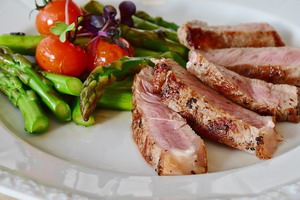 So what do you eat? Ideally, you would eat grass-fed beef, pastured eggs, wild-caught fish, butter and cheese, vegetables, moderate amounts of fresh fruit, legumes, herbs, and spices. What you are avoiding are grains, seeds, nuts, soy, and most oils. Olive and coconut oils still have significant amounts of linoleic acid in them, but some writers believe the high oleic acid in them counters this issue. Similarly high oleic safflower and sunflower oils may be okay. If you want to check a specific food for linoleic acid amounts, use the government food database. Scroll down on your chosen food to the section labeled polyunsaturated and check PUFA 18:2. This is linoleic acid.
So what do you eat? Ideally, you would eat grass-fed beef, pastured eggs, wild-caught fish, butter and cheese, vegetables, moderate amounts of fresh fruit, legumes, herbs, and spices. What you are avoiding are grains, seeds, nuts, soy, and most oils. Olive and coconut oils still have significant amounts of linoleic acid in them, but some writers believe the high oleic acid in them counters this issue. Similarly high oleic safflower and sunflower oils may be okay. If you want to check a specific food for linoleic acid amounts, use the government food database. Scroll down on your chosen food to the section labeled polyunsaturated and check PUFA 18:2. This is linoleic acid.
Take care,
David
